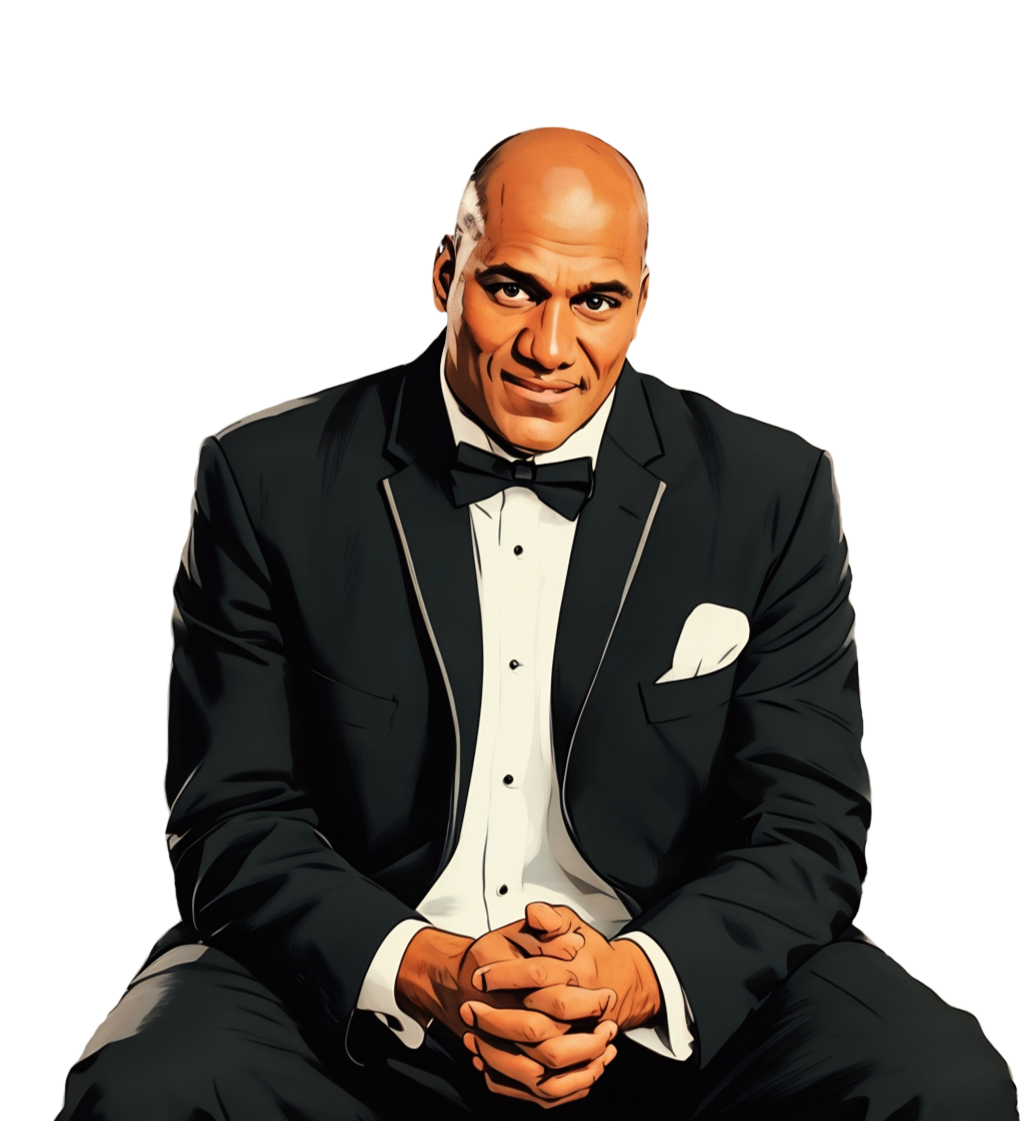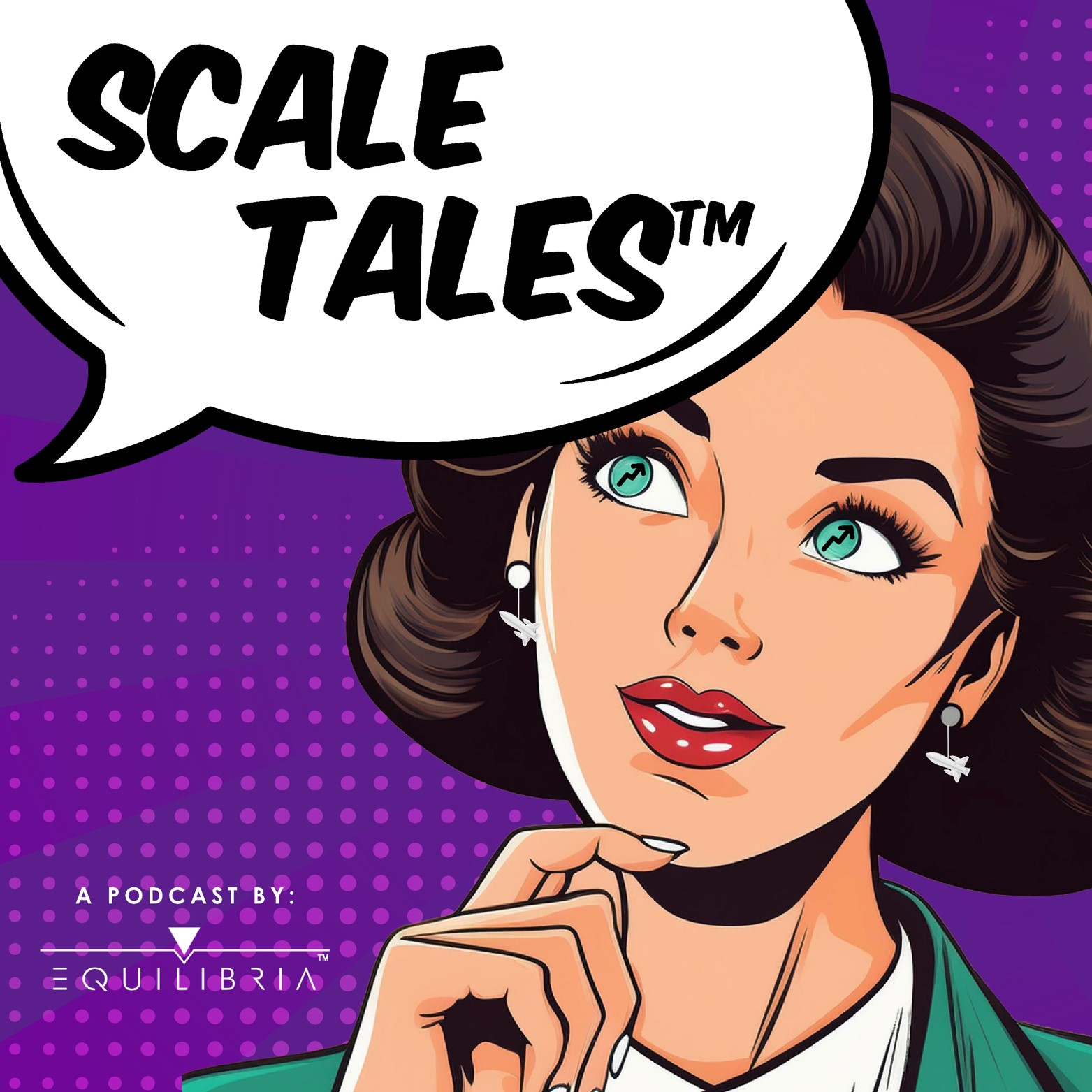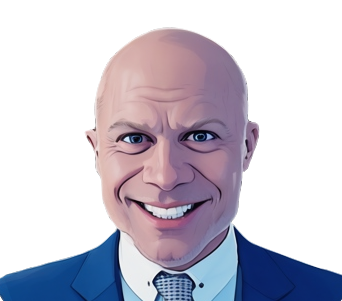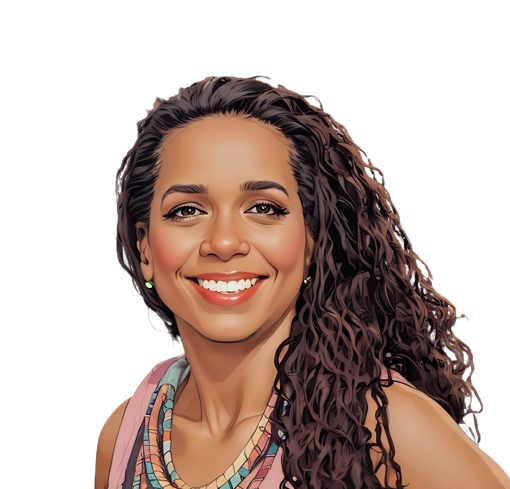Transcript
This episode is brought to you by Equilibria, Inc. Equilibria provides training to assist fast-growing companies in documenting and improving their key processes for maximum operational performance. Visit EQBsystems.com to stop the chaos of fast growth and start flowing today! EQBsystems.com.

Welcome to Scale Tales – the business storytelling podcast where entrepreneurs, executives and experts share firsthand accounts of those magical moments when they achieved something bigger than even they could have imagined.
I’m Alicia Butler Pierre and I must admit, I love a good magic show. They’re so memorable. There’s one I’m thinking of now that I saw during a conference in San Diego, California. It was incredible and, honestly, it was one of the highlights of the conference. It was different. Memorable. So when I met this next guest at a networking event and found out more about his work as a sales and marketing consultant as well as his background as a magician, I knew I had to invite him to the show! You’re about to be in for a real treat! And I promise you’ll learn some new tricks along the way.
This is Ep. 21: How Eric Anderson Used Magic to Make a $3Billion Sale
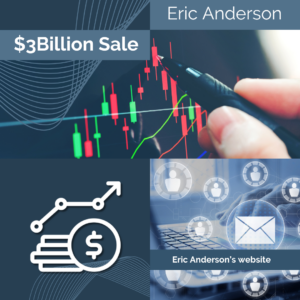
I’m Eric Anderson. I’m a direct marketing and sales expert that uses live presentations to show business owners how to grow their businesses. I’m currently in Atlanta, Georgia, and this is my scale tale.
It started the summer of the year 2000. I’m gonna go back a little bit, just give you a little more context, so this makes more sense to you. How did I actually become a direct marketing and sales expert? Well, back in the day, I had a dream of becoming a professional magician. Yep, you heard that correctly. A professional magician. I fell in love with it as a child, and I wanted to make it my career.
The problem was I knew what I wanted to do. I did not know exactly how to market and sell myself. And when I say magician, I’m not necessarily talking about children’s birthday parties. I’m talking about for major corporations, helping them sell their products and services, which eventually it led into. Over time, I discovered the secret was sales and marketing. So we fast forward a bit. I started working with Fortune 500 and 100 corporations, helping them sell their products and services using magic as a way to provide edutainment and entertainment while at the same time tying in their product messages.
So let’s get to the scale tale. The year was 2000. It was in the summer, and I get a call from a major corporation to help them sell a computer system. The thing I thought was interesting is
the way they wanted to do it, because it was something I had done before, just not at this particular level or this scale. We traveled around the entire country in Puerto Rico, and what the
corporation would do is they would bring in their best potential clients for what they’re offering. We would do these events in hotels, so there may be 50, 70, maybe tops, 100 people in this
hotel room. There was two presenters, myself and another person. She was a lady and she would provide the technical side of the specs, everything that the engineers needed to know to see if this was a great decision. I would basically take everything that she was saying and just put it into a real entertaining way for everybody else in the group that didn’t understand all the stuff
Well, long story short, one of the sales, there’s many sales, but one of the sales was a $3 billion sale. Now what was interesting about this is, this is like a really, really high-end product.
Obviously it costs a lot of money. But what I learned as a business owner was, I started to look at the model they were doing and how effective it was. Being a sales professional, I understood that they were selling in a vacuum, meaning they weren’t out competing with everybody else trying to get this customer.
They took their best potential customers, put them in a space where they can now potentially be successful. In this case, they provided lunch and we would give a full day presentation. This
helped the prospects understand what the product was all about. And I was very familiar with that because in marketing, we call that education-based marketing. Bringing your potential best clients together and educating them on what it is that you offer.
I say this again and again, it’s really important. Doing this in an environment where there are no competitors around you. I found if you educate your clients effectively giving them what they want and they already need what you got, it’s just amazing. $3 billion was one sale. We had many, many sales. There’s $30 million, $10 million, lots of different sales depending on the
clients that were coming in.
Besides selling to potential customers in a vacuum, another important part of the formula for education-based marketing that Eric noted involved having a presentation partner.

She was doing the technical side of the presentation and I was following up with pretty much everything she said, just saying it in a different way. She would speak for typically 45 minutes and then she would bring me up. I would speak for another 45. We go back and forth in this environment. A couple of things I think is important that you listen to is it was two different
perspectives and not just the technical side.
It was two different personalities allowing the audience to engage with both of us. Because what happens whenever given a presentation, especially in the sales environment, monotony sets in real quickly.
And to prove the point of monotony or overly rehearsed, dry presentations, Eric recalled a specific example. He was taking his usual walk through a hotel while his partner spoke in a room behind closed doors during her portion of their sales presentation.
This particular day, I’m off in the hotel, just whatever I’m doing, and one of the executives with the corporation that we were representing comes running out of the room down the hallway
screaming,
“Eric! She freaked out! She just stopped talking!”
I’m not sure what’s going on. So I run back into the room, and I just kind of take over where she left off. Well, we found out later that her battery pack went dead. So why did she get a battery pack? Well, back then, she had a recorder, that had a little wire that went up to her ear, and it was just this system that allowed her to read all the information in her hotel room, and then this recorder would play it back in her ear at a slower pace, allowing her to recite the information to everybody there.
And one of the things the client kept saying is,”
“Wow, how did you memorize all this information?”
Well, it’s not that she memorized it. She was just reciting the information. Naturally, when the battery goes out, she stopped. She doesn’t really know what to do. The interesting point is, and again, this wasn’t something the company thought was bad. She just had a little mistake in this particular case. But this taught me that lesson that you really, really got to know your product and service well to be able to present it to whoever it is that you’re presenting it to.
Another interesting thing I thought was fascinating with the story was with this particular roadshow, towards the end of the show, there was a new executive that came on board with the
organization and for some reason he didn’t like the roadshow. Whenever you get new management, they always want to make changes, whether changes need to be made or not, but
they always want to make changes.
He got rid of the roadshow. Now, this roadshow only cost a million dollars to put on. So that’s the traveling, that’s my fee, her fee, hotels and everything. And as I mentioned earlier, one of the sales made over $3 billion
Well, at some point they ended up letting that guy go because it just didn’t make sense. If it cost a million bucks and you make $3 billion. That’s something you might want to keep doing at some point. I just thought that was a funny story that happened with this. But it was a huge, huge learning lesson.
If it ain’t broke, don’t fix it. Eric leveraged this and other valuable lessons he learned during this corporate roadshow to start his own business. He realized that…
As a business owner, I could apply the concept of exactly what they were doing. I don’t have a $3 billion dollar product, but it doesn’t mean that it won’t work with what I’m offering. I take all of my potential best clients, put them in a space, educate them on what I’m offering, and then a percentage of those people will now move forward with me with what I’m offering.
I really haven’t found a business owner that cannot benefit from this process because it’s such an effective process and allows you to scale your business very quickly. I’m always talking with
people about their sales process. And one of the questions I ask is, “What is your sales cycle?” How long does it take for you to make a sale?
With this one particular company I asked that question to one of the salespeople. He said about nine months. As businesspeople, how do we shorten that because if you could turn that into six months into four months. You scale your business very quickly. And that’s the other thing I learned when working with these corporations. There’s still a sales cycle, but they were able to shorten that. And the thing that helped shorten that process was putting their best potential prospects in a room and educating them on their products and services. Very, very powerful.
Don’t get me wrong, this is great information, but I wondered if we could get back to the magic for a moment. What was it that Eric was doing as a magician that helped make that $3B and other high-end sales during that corporate roadshow?
I call it presentation accessories. So whether it’s a magic trick or whether it’s something that helps communicate the idea of whatever it is I was talking about at that particular moment, a
presentation accessory is simply something that helps communicate the idea in a more understandable way where everybody could get it
Think about Dr. Oz, you remember his TV show, he would use props, to help explain what he was talking about. Well, that’s simply a presentation accessory, allowing more people to get on
board. Also what this does is it makes it easier to communicate the idea. Again, monotony sets in a presentation very, very quickly.
Using props, using magic, using a variety of different things that I know how to do. That’s the thing I would help corporations do, because I can come up with very unique ways to get the
point across and make it extremely clear where everybody gets it.
In case you’re unfamiliar with who Dr. Oz is. No, he’s not the Wizard of Oz, he’s an American celebrity doctor who appeared on many daytime TV shows in the U.S. As Eric explained, part of Dr. Oz’s rise to fame was his ability to use props to explain otherwise complicated medical terms. To demonstrate his use of magic tricks during a presentation, Eric has another example to share. Unlike Dr. Oz, this example involves a company that needs no introduction. It’s recognizable just from its logo.
It was the McDonald’s Corporation, and I’m going to share the presentation accessory I came up with for them. In this case, we’re in a corporate setting in a hotel banquet room. What you saw on stage was props kind of sitting off to the side, and they were flat, so you really couldn’t tell what they were. I came out and I started the presentation and I simply started to tell the story of McDonald’s and how they were built from the ground up. And in the process, as I’m telling this story, I take the props and I start to erect a miniature McDonald’s on the stage.
This was an idea that he hatched with a new sales director. It would be this director’s way of introducing himself to his new team. The miniature McDonald’s Eric constructed was complete with a roof and those infamous golden arches.
At the end of that, I pull the roof off. And that sales director pops out of it. That was his introduction to everybody in that particular moment.
That’s one heck of an introduction! But it begs the question, what comes next? After the glitz and excitement of the presentation accessories, how do you convert people from potential to paid customers? Coming up after the break, Eric will explain the overall sales process. No magic wand required.
Some small businesses fail not from the lack of customers, but from too many. When your business receives positive publicity, it’s exciting! The spotlight attracts more customers and the cash flows in. But too much growth too soon can be catastrophic especially if your organization lacks the business infrastructure to support this growth. Behind the Façade: How to Structure Company Operations for Sustainable Success is a book that introduces a proven framework for building business infrastructure. The book is structured into six relatable stories of entrepreneurs who apply this framework, giving you an inside look at how they solve their fast growth issues and how you can too! Pick up your copy today at ScaleTalesPodcast.com. ScaleTalesPodcast.com.
Welcome back! Eric Anderson is a top-rated businessman who also has some magic tricks up his sleeves. In fact, he once used magic to help close a $3B sale for a large corporate client. You may not have a product or service worth that much, but the sales process Eric observed and mastered can apply to your organization. It doesn’t require pulling a rabbit out of a hat or waving a magic wand, but it does require grit, consistency, a willingness to try new things, and…a solid business model. Here’s Eric.
I love business models. I tell business owners, you change your business model, you could change your life. Because, sometimes there’s just certain things that just make more money,
period. It’s not about being more intelligent. It’s just you’re just doing something that makes more. Once I understood this process and what was kind of going on, I started producing my
own events, my own seminars, and showing other people how to do this. Now we have the benefit of Zoom. So you could do these presentations on Zoom.
However, they’re more effective live where people can see you, shake your hand. It doesn’t mean they don’t work on Zoom. There’s just something about being able to, as they say, nose
and nose, toes to toes. Just seeing somebody, being able to shake his or her hand, break bread with them, whatever that happens to be, it’s just a different thing entirely.
When I started working with other business owners, one, they wanted to know what I was doing differently because some of them knew my entire backstory, not just the magic side, and the
changes and transformations that were happening in my life.
One major factor for Eric’s rapid life transformation was his mindset
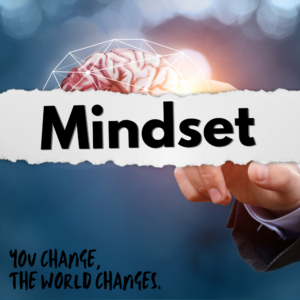
You got to have the right mindset, but a lot of it was I just learned sales and marketing. So when I started to teach other business owners how to do it, I said, “Look, let’s take your best potential prospects. Put them into a space, whether it’s Zoom or in person, put together a presentation.” Now that’s the part that a lot of people miss is the presentation has to be put together properly. At my most recent event, a student of mine, she brought in some students of hers because I’m her coach, and she wanted them to meet her coach and mentor.
And they were talking to her afterwards and she said she forgot to tell them that the entire experience is a presentation. So here’s what I mean by that. A lot of people think the
presentation starts when they walk into, in this case, it could be Zoom, or when they walk into the hotel room, okay? But the truth is the presentation starts with the first phone call, the first
communication, the first email, the first letter, or a combination of all of that, depending on what it is. That’s when the presentation really starts. So a lot of people don’t realize the entire
experience is a presentation. And that’s why, when we say touch points, some people think the hotel is just a touch point in itself.
Obviously, that’s one. But let’s say you had a series of communications leading up to everybody going into the hotel. Well, those are also touch points. And if those are done properly, you can educate and get people ready. I call it priming the audience. How do you prime the audience so they are ready for you once they walk into the room, Zoom, in-person, whatever it may be?
Because the worst thing a marketing, sales professional can do, is try to make the sale when then person doesn’t really know you. Because Jay Abraham, marketing expert back in the day, said, you want to get people to the point where they know like and trust you, right? Well, we could speed that process up. And we do that by educating people about us, about who we are.
But they’re not trying to figure all that out when, we’re giving a presentation.
Eric has another example to illustrate this point using the same business coaching
student.
She wanted to get her coaching business going. She had just left her job and she said
“Oh, I don’t have an audience.”
I said, “Well, have you ever gone to a networking event? She said,
“Yes.”
Have you ever collected business cards? She said,
“Yes.”
And I said, “Have you ever followed up with any of those people? ‘’She said,
“No.”
Wrong answer because the fortune’s in the follow up and you never ever know who you’re going to meet. So I showed her how to put together a presentation. In this case, I use what I call
the interview format, which meant I interviewed her and she had to answer the questions. And these are particular questions I put in a particular order that lead to the sale. So I said, “Let’s
start with those assets that you already have.” She said,
“I don’t have any assets.”
I’m talking about those business cards that you’ve been collecting over the years. So I had to take those business cards. We sent a email series. Now keep in mind these people have not
heard from her, years in some cases. We sent an email series to these people. This is over a fiveday period. So that’s the sales cycle right there. Over a five-day period, we sent a series of emails to her audience of people. She had eight people show up for this particular presentation. Not a lot. Eight people show up. 79 minutes later, right, one person moved forward with her, became a coaching client at $13,000! And she was shocked. She could not believe it could happen that quickly. And while she knew she had this person’s card. She said,
“I had no clue that this particular individual would move forward with me.”
So let me just point that out. You can’t assume what somebody’s going to do. Your job is only to make the presentation in this particular case. Okay, so that was $13,000 for her. And that same person signed up again after that particular session at $15,000.
That ended up being $28,000 from one client, from one 79 minute webinar. That’s how quickly you could scale and get traction doing what it is that you want to do. I have lots of stories.
And hopefully one of those stories will eventually involve your own scale tale. How can
you take your knowledge and bedazzle it with presentation accessories?
So I always say, you want to take what makes you special, you unique, and incorporate that into your business. We’re not even talking about this presenting, but just in general, you want to take all of that stuff. Your website should definitely have about us, about you, about whoever. And you want to share. Just those odd things that may be normal for you because that’s your life, but for everybody else, like, Wow! That’s different. So I got a student as an example.
She went skydiving. Well, in her circle, not a whole lot of people are going skydiving. When they found out she went skydiving and she has video of it. Instant conversation starter.
This, Eric says, is a common mistake – the tendency that some people have to try to be someone they are not. He encourages you to be yourself!
Back in the day, I used to try to be super corporate. And by corporate, I just tried to fit in. So I get a call from this particular client and I answer the phone.
”Hello, this is Eric. How can I help you?’’ And she says,
“Eric, when we call you, the reason we call you is you are not us! That’s why we call you,
because we want something different.”
I’m like, “Are you sure? You know, I’m just..”
But the lesson for me was you can just be you. I was trying to fit in at that time. And, as one of my mentors taught me, you don’t want to fit in, you want to stand out. See, because when you
fit in, you get what everybody else is getting, but when you stand out, you get what everybody else is getting on top of everything else that everybody else is afraid to go do.
Standing out by being authentically you brings us to Eric’s backstory.
Because in the end, right, as Jay Abraham says we do business with people we know, like, and trust. So how do we get people to know, like, and trust us? Well, a lot of it has to do with your
backstory, and who you are as a person. We’ve all been in situations where we say, “Oh, how did so and so get that?” That’s their brother-in-law, that’s their sister-in-law, that’s whatever. Well, we could all create that. Right?
So how do we create that? Well, we take those personal experiences and we run with it. I’m gonna give you an example. I’m a father of twins. If I were to really use it in my marketing, I would market in such a way that, let’s say I was a realtor.
And I have twins. I would go after people that have twins or are a twin. Because now it’s like instant affinity. Oh, what are your kids’ names? How old are they? Do yours do this? It happens
instantaneously. Don’t run away from who you are. Run towards it. Lean into that, put that stuff out there and it makes you stand out. Because remember, we’re not trying to fit in. We are trying to stand out.
To test these lessons, I asked Eric to apply this logic to a small, service-based consulting company where the sales cycle is about 90 days for an average $50,000 USD project.
One of the big things is if you simply change the who you’re talking to… So the story I’ll share real quick is I used to do a lot of stuff with Bellsouth and I would go do my presentations and I
remember doing a bunch of stuff for them and then I get a call and they said,
’Oh, Eric, we want you to charge more because this is the C-suite that you’re speaking to or presenting to.’’
‘And I said, “Okay, it’s not a problem, right?” Just charge more. But the lesson I learned is it was if you change the who you’re talking to, you can charge more. They didn’t care anything about the presentation, didn’t need to change, but their expectations of who they felt they were and what they expected to pay changed so they wanted to pay more. The big thing I tell business owners, especially coaches and consultants, is change the who you are talking to. And one of my favorite books is by Stuart Wild. The title of the book is the Trick to Money is Having Some.
And the quote in the book that stands out, there’s a lot of them, but one that really stands out is he says, ‘’You never make your economy everybody else’s economy.’’ That can mean if things are tight for you, doesn’t mean it’s tight for everybody. So, go after people that actually have the money. There’s people that spend $50,000 on a poker hand walking through a casino. And these aren’t necessarily celebrities. If you’re talking to somebody like that, and if they’re willing to put about $50, $75,000 on a blackjack hand, lose and keep walking. Do you think if you get in front of somebody like that and present something to them that potentially make them more money or help them in their business or help them in their life, whatever it happens to be, whatever you consult and coach on, they might just be willing to spend that $50 to $75,000 on you? Well, the answer is yes! We just got to get in front of those people.
So, the other thing I tell people is sometimes we have to work on ourselves. So for me, that was something I had to do back in the day because I grew up in a situation where, like, a lot of folks that just wasn’t even in my ballpark. For me, that number was $15,000. I was in my 20s. Somebody paid me 15 grand for a couple days’ worth of work. And I could not believe it
because prior to that, I had made working as a janitor a full year, it was like, $6,900 bucks for a full year of work.
So now somebody’s paying me twice that for two days’ worth of work. We’re talking about five hours a day. It just absolutely blew my mind. But what I said is, there must be more people out there like this. So getting back to the $50 grand. Dealing with people that could actually afford to pay it. Whether it’s a business owner, entrepreneur, somebody that has the money. A lot of times people are just speaking to the wrong people and two, educating them on why they should make that investment. The way I always think about it is one of my programs is $10,000. Okay?
I’m thinking about the student that just came to the event. She invested with me and she’s so far made $235,000 from that investment. If the bank was having a sale on money, and they said, look, for every dollar you bring us, we’ll give you a $10 bill. My question is, how many dollars could you get and how many times can you get to the bank? Well, the obvious answer is as
many times as possible.
It’s selling money at a discount. If what you’re offering to somebody can make them more than in this case, $50,000, and you make that argument make sense for them, it becomes a no
brainer. You’re not even selling at that point. They just want to move forward with you. So that’s one way to get it. The other way is how you present price.
It’s very, very important. A lot of people, they’ll present the price. The potential client says, okay, how much is it? You say it’s $50,000. And they pause. A more powerful way to present price is to present it in packages. Okay, so let’s say $50 grand is your low-end package. Your medium package is $75,000, and your high-end package is, we’ll say $500,000.
Well, what this does is first off, now they’re making a choice between you, you and you. You never want to give somebody just a yes/no option because it’s a 50% chance it’s no. Okay, but
now if you give them between this, this and this, or this and this, at least two options always.
That’s another way to present price. Another way to do that is oftentimes like the story of Goldilocks and the three bears. They will find themselves right in the middle. So you can go from
the 50 to the 75 just by presenting it to them. So it makes sense. And there’s a whole strategy as to how to go do that, how do you present price. Like, you never call it a proposal, all sorts of things. How many other people are involved in the process, is it one individual, is it a company, and so on? The big thing is sometimes we got to get it right in our own head. And you never
ever want to present just a single price.
Great advice, right? Well, Eric’s not done. He has even more advice and resources to share with us.
The great equalizer is sales and marketing. I don’t care what somebody’s situation is, where they’ve come from, what part of the world they live in. If there’s an economy and you learn how
to sell and properly market yourself, you can move mountains. Marketing is what we do to get somebody to sell to. If you market properly, they’re already presold when they get to you.
Then you are just hammering out the details at that point. I said direct marketing earlier when I introduced myself, direct marketing is very different than institutional marketing. So, the
difference is when Coca-Cola puts a billboard up, they’re not necessarily just trying to go sell Coca-Cola, right? Because it’s set up in such a way you already know what Coke is, they’re doing
it for other reasons.
But if you’re a small business owner, you want to use direct marketing because you ask people for a direct response. That’s the term, direct response marketing. And because of that, you can now track your results and understand why you’re doing what you’re doing. If anybody wants to connect with me, you can go to my website and sign up for whatever the upcoming event is. I usually do a two-day event and it’s full of this stuff because I understand how powerful information is.
I educate people and there is a percentage of those people that will move forward with me. But regardless of whether somebody moves forward with me or not, I still want people to benefit.
just because somebody hasn’t invested with you today doesn’t mean they won’t invest with you tomorrow. Another gentleman called me up, he saw me speak doing this particular workshop
five years ago and he called up and said,
‘’Eric, I’m ready.’’
He was receiving my email. Well, he’s not the only person that does that. The fortune’s in the follow up. Don’t be afraid to follow up with people.
That’s right, don’t be afraid to follow up with people. After all, a closed mouth does not
get fed. So many lessons in this episode.
Here’s a recap of some of them:
- Entertain to educate your customers. This is known as edutainment or education based marketing.
- Sell in a vacuum. Position yourself so that you’re the only one a potential customer can focus on.
- Present information in different, clever ways to avoid alienating potential customers. It doesn’t have to involve magic. Figure out which presentation
accessories you can use to make even more sales.
- Know your product or service well so that you can defend it if necessary.
- If you aren’t charismatic or entertaining or conversely maybe you’re not a technically savvy person, then partner with someone who is!
- Mindset is key for transformation.
- The presentation you give in a webinar or workshop format is part of creating a memorable customer experience. It helps to prime your audience for the sale.
- The fortune is in the follow up. Your contacts are business assets.
- Be yourself! It will help you stand out.
- Direct response marketing enables you to get firsthand feedback from potential customers.
Thank you, Eric, for sharing your scale tale with us! You can learn more about Eric Anderson, how to work with him, and how to sign up for his next event where he demonstrates the techniques he described in this episode’s show notes. You can click the link in the description area wherever you’re listening to this episode, or you can visit ScaleTalesPodcast.com. Again, that’s ScaleTalesPodcast.com.
Thank you for listening! If you learned something valuable from this episode, please leave us a five-star rating and review.
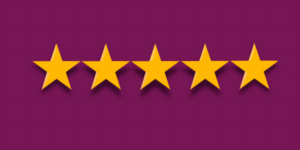
I’m Alicia Butler Pierre and I produced and narrated this episode. Additional voiceover by Clarence Levy III. Audio editing by Olanrewaju Adeyemo. Music production and original score by Sabor! Music Enterprises. Video editing by Gladiola Films. Show notes by Hashim Tale.
You’ve been listening to Scale Tales, a podcast by Equilibria, Inc.







